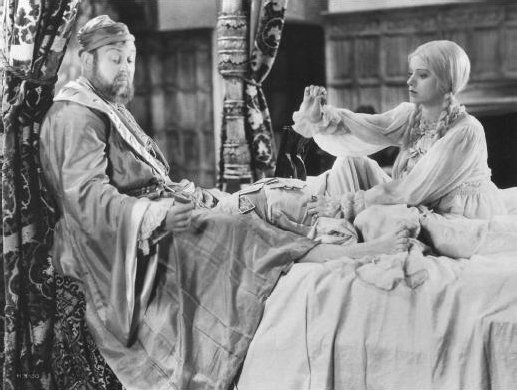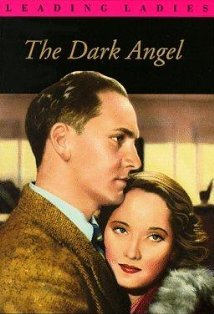
Merle Oberon Hid Biracial Heritage throughout Her Life — inside the Hollywood Icon's Journey
Screen goddess Merle Oberon's exotic beauty seduced Hollywood but hid a secret she feared would ruin her future.
Actress Merle Oberon spent her entire life hiding away her biracial heritage in fear that discrimination would end her movie career. The stunning alabaster-skinned beauty was half Indian, a heritage she hid from the world at all costs.
Oberon went on to become one of the greatest movie stars of the era, and an Academy Award-nominated actress, but do so she rewrote her past and spurned all contact with her family, her identity, and her past.

Merle Oberon in RKO's 1948 movie, "Night Song" | Source: Getty Images
THE BIRTH OF A STAR
A more unlikely beginning could hardly be imagined for the girl who would one day be one of the world's most feted beauties. Her mother Constance was just 12 years old, her father unknown.
Merle, born Estelle Merle O'Brien Thompson, was raised by her grandmother Charlotte, who was a Eurasian from Ceylon, and part Maori. In order to avoid scandal, Charlotte claimed Merle was her own child, sister to her mother Constance.
Years later, one of her half-brothers, who had moved to Canada sought her out in Los Angeles and tried to establish a connection

Merle Oberon publicity photo circa 1943 | Source: Wikimedia
THE LIFE-LONG LIE
To understand the reason Merle would cling to her lies about her heritage, it is perhaps necessary to understand the world into which she was born in 1910. British Indian society was ruled by the English class system, intolerant of people of mixed race.
Wealthy native Indians were accepted in the British segment of society if well-born enough -- as in the case of Indian Royalty -- but the biracial product of relationships between men and women of different races were an affront and a threat.

Merle Oberon publicity photo circa 1936 | Source: Wikimedia
In British India, white men outnumbered white women vastly, and biracial children were seen as a betrayal of morality, the mingling of British blood with inferior races due to illicit relations, or worse, the result of love affairs.
That some British men preferred a woman of another race was even more unthinkable. Merle's first taste of the bitter brew of her ancestry came early on in her life. In 1917, the family moved to Calcutta, and Merle was admitted to La Martiniere Calcutta for Girls.
La Martiniere Calcutta for Girls was one of the most prestigious private schools in the country, and though Merle was light-skinned, her ancestry was known, and she was taunted and tormented by her colleagues.
Her already-notable porcelain beauty did not help endear her to her less well-favored though infinitely "better-born" colleagues or their mothers. Charlotte eventually withdrew Merle from the school and she completed her education at home.
A PASSION FOR CINEMA
However, she did acquire the perfect diction and the elegant upper-class English accent that would open so many doors in the world of British theater and cinema. The cinema offered Merle a brief escape into a more gracious and fascinating world.
Sitting in the dark, watching the mesmerizing flickering images of Rudolf Valentino on the screen, it was easy to believe anything was possible -- anything. The star-struck Merle joined the Calcutta Amateur Dramatic Society and trod the boards for the first time.
A LOVE DENIED
In 1929, Merle met a former actor and Colonel in the British Army, Ben Finney. Finney was enamored, and it looked like the romance might lead to a serious commitment, until he visited her home. There he met Constance, whom he thought was Merle's sister.
At the sight of Constance's dark skin, Finney realized that Merle was of mixed race, and he immediately ended the relationship. Finney did do his former beloved a good turn: he wrote her a letter of introduction to Rex Ingram of Victorine Studios.

Poster for "Desirée" with Marlon Brando, Jean Simmons and Merle Oberon 1954 | Source: WIkimedia
Charlotte and Merle left for France to meet Ingram, and on the way, Estelle Merle O'Brien Thompson vanished without a trace. Merle Oberon, born and bred in suitably exotic Tasmania, of impeccable breeding and stunning beauty, disembarked in England. She later said:
"I was born in Tasmania but left there when I was a child (...) several people in odd parts of Australia have bobbed up to claim me as a relation."
Years later, Merle would fend off would-be long-lost relatives from Australia, whom she knew for a fact were not her family by vaguely alluding to some suitably dramatic family feud. She said:
"I was born in Tasmania but left there when I was a child (...) several people in odd parts of Australia have bobbed up to claim me as a relation [but] my family quarreled with them some time ago."

Laurence Olivier and Merle Oberon in "Wuthering Heights" in 1939 | Source: Wikimedia
MERLE TRIUMPHANT
Merle got her break in 1933 when director Alexander Korda cast her in the small but memorable part of the seductive Anne Boleyn in "The Private Life of Henry VIII." From then on, her rise was meteoric.
In 1934, Korda cast her again as his leading lady in "The Private Life of Don Juan" opposite screen icon, Douglas Fairbanks -- and married her. In 1935, she received an Academy Award nomination for "The Dark Angel."

Charles Laughton and Elsa Lanchester in "The Private Life of Henry VIII" directed by Alexander Korda | Source: Wikimedia
In 1939, she won the defining role of her career as the tormented Kathy in "Wuthering Heights opposite the already legendary Shakespearan actor Laurence Olivier. But instead of reassuring her, her success only increased Merle's fear of discovery.
Perhaps she imagined a chorus of disgust, or on the faces of her lovers the same rejection Finney had visited on her on discovering her background. Even though Charlotte had been her constant companion until her death in 1937, Merle cut off all contact with her family.

Poster for "The Dark Angel" 1935 | Source: Wikimedia
LIVING IN FEAR
Merle never saw Constancem her birth-mother again. Years later, one of her half-brothers, Henry Selby, who had moved to Canada, sought her out in Los Angeles and tried to establish a connection, but Merle rejected him unequivocally.
Estelle Merle O'Brien Thompson was dead, and no-one would be permitted to resurrect her and until the very end of her life, as Merle Oberon, she hid and denied her true self.
